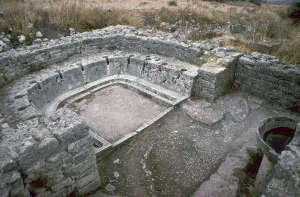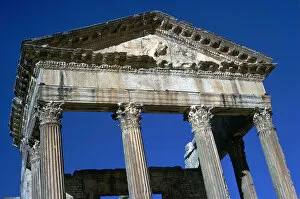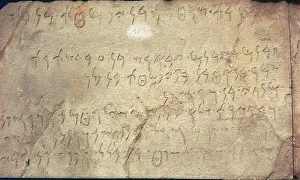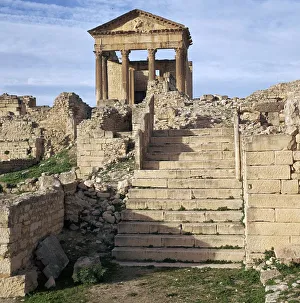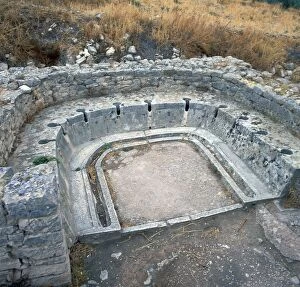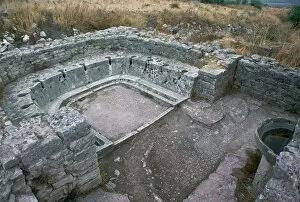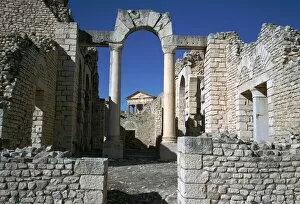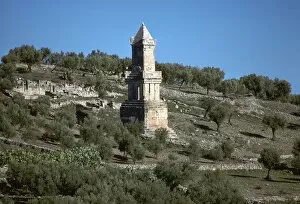Bajah Collection
"Bajah: Unveiling the Ancient Roman City of Thugga and its Remarkable Ruins" Step back in time to the 2nd century BC
All Professionally Made to Order for Quick Shipping
"Bajah: Unveiling the Ancient Roman City of Thugga and its Remarkable Ruins" Step back in time to the 2nd century BC, where public latrines and wash basins adorned the streets of Dougga. This captivating city, once a thriving capital, showcases its grandeur through magnificent structures like the Roman theatre and capitol. As you wander through the ruins of Thugga, you'll stumble upon a Punic memorial to Atchan, an intriguing piece that tells tales of ancient Phoenician history. The mausoleum nearby bears witness to this era with a Phoenician inscription listing names of those who worked on it. Dating back even further to the 6th century BC, remnants from the Roman city still stand tall amidst nature's embrace. These ruins offer glimpses into a bygone era filled with architectural marvels that have stood against time. A fascinating find awaits as you explore an authentic Roman latrine from Tunisia dating back to around the 3rd century BC. Nearby lies another public latrine and washbasin near Dougga's renowned baths - evidence of advanced sanitation systems in this ancient civilization. Through an archway stands a breathtaking view - distant yet imposing - revealing Dougga's majestic capitol from centuries past. Marvel at its grandeur as you imagine life during those times when this city flourished under Roman rule. Bajah beckons explorers seeking an immersive journey into history. Discovering these remarkable ruins not only unveils their architectural brilliance but also offers insights into daily life in one of Rome's most significant North African cities.

